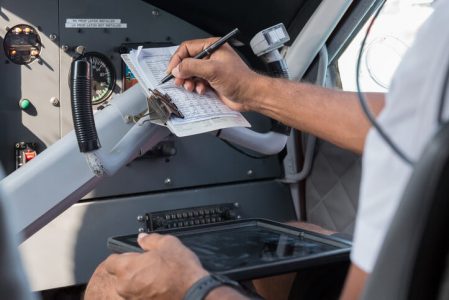Online Aviation Flight Planning
Part I in our Aviation Flight Planning Series was about the initial steps required to prepare a flight plan using the ForeFlight application. In Part II, we’ll discuss the steps required to bring it all together, including weather briefings and “packing” for the flight and finally, filing a flight plan with just the push of a button.
As a review, the first 4 steps to planning a flight consist of:
- Entering your departure and destination airports
- Confirming the correct airplane you will be flying
- Choosing your most favorable route, and
- Selecting the best altitude for the given conditions
When all of this is complete, it’s time to load everything into the “flights” page. This is where you will finalize all the details for your flight. The good news is that you do not need to take the time to re-enter all of your data. At the bottom right corner of the “edit” box, you will see an up arrow. Tapping this up arrow will open a “send to” menu and you simply select the “Flights” tab to send your route, altitude and aircraft information to the “Flights” page.
At the top of the Flights page, tap the “Briefing” button to request an official preflight weather briefing. This will include everything you need to know about the weather on your flight, such as METARs, TAFs, AIRMETS/SIGMETS, NOTAMs and more.
Next it’s time to pack your databases. The “Pack” feature of ForeFlight makes it easy to download all of the chart databases for your specific flight. Since you’re already on the Flights page, simply scroll to the bottom and you’ll see a “pack flight” button on the lower right-hand side. Tap that button and everything will download for your flight. You can also find a “Pack” button on the Maps page, on the bottom right side of the edit box. It looks like a tiny suitcase. Click on this and you’ll get the same results.
Finally, at the bottom of the Flights page, tap the “Proceed to File” button to file your flight plan with ATC. You’ll receive an instant acknowledgement and soon you will get an “expected route” from ATC. Again, it is critical that you make sure you have the correct N number for your aircraft of the day – all of the performance information is based on your specific airplane.
That’s it! Once you do it several times, you can plan your flight and file your flight plan in a snap. Pretty soon we’ll be wondering how we ever planned a flight without all of this technology. Can’t wait to see what they come up with next!
RELATED CTS TRAINING










